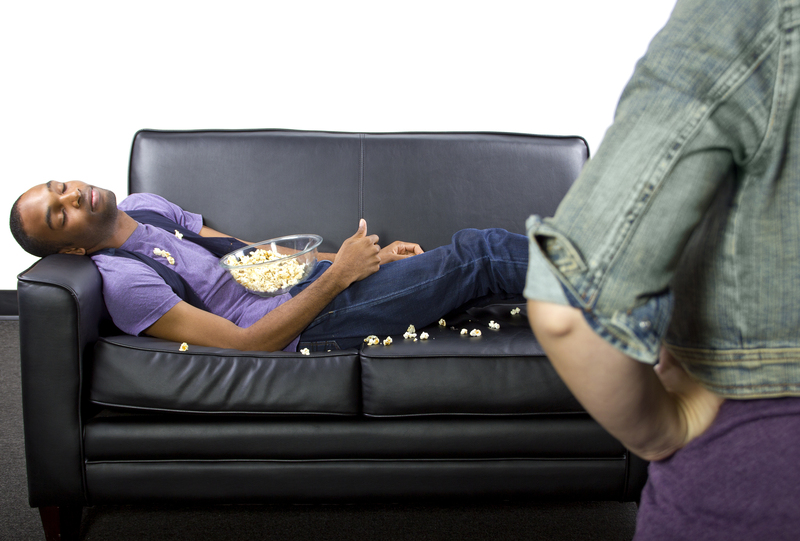Lifting Heavy Objects by Yourself: Pro Methods Revealed
When the time comes to move a large appliance, shift furniture, or handle bulky equipment on your own, it's vital to know the safest and most effective approaches. Lifting heavy objects by yourself can seem daunting--sometimes even dangerous if you don't use the correct techniques. By learning pro methods and strategies, you can protect yourself from injuries and get the job done with greater confidence and efficiency.
Understanding the Risks of Lifting Heavy Items Solo
Many back, neck, and joint injuries happen because people attempt to lift or move heavy things without the proper know-how. Muscular strains, herniated discs, dropped objects, and even broken toes and fingers are not uncommon. Before diving into lifting heavy objects alone, it's crucial to respect the risks and prepare accordingly.
- Muscle strains: Overuse or improper technique can lead to torn ligaments.
- Back injuries: Lifting with your back, rather than your legs, is a top cause of acute pain or long-term issues.
- Tripping hazards: Moving while carrying obstructs your view, raising the risk of tripping or slipping.
- Pinching and crushing: Large and awkward items can pinch fingers or crush body parts if mishandled.
Awareness and preparation are your first line of defense. Let's uncover how the pros minimize these risks while lifting heavy articles by themselves.

Preparation: Planning Makes Perfect
Before you attempt to move heavy objects by yourself, follow a checklist that the professionals swear by.
1. Clear Your Pathway
Before you begin, examine the entire route you'll be taking. Remove all obstacles, rugs, cables, or doorstops. Ensure adequate lighting and check that doors are open and wide enough for the item's dimensions.
2. Assess the Load
Ask yourself the following:
- How much does the object weigh? If it's over 50 pounds (23 kg), proceed with extreme caution.
- Is the object awkwardly shaped or difficult to grip?
- Can the item be disassembled, emptied, or lightened before you move it?
If the answers suggest danger or impossibility, reconsider moving the object alone, or get the right equipment and techniques in place.
3. Use Personal Protective Equipment
- Work gloves: Protect your hands from splinters, scrapes, or blisters.
- Sturdy shoes with good grip: Prevent slips and foot injuries.
- Back support belts (optional): Provide extra core support if you're frequently lifting heavy things solo.
Pro Lifting Techniques for Moving Heavy Objects Alone
Discover the specialist methods the pros rely on to lift and move heavy objects by themselves with safety and efficiency.
1. The Squat Lift
This classic technique minimizes strain on your back and targets your powerful leg muscles.
- Stand with feet shoulder-width apart, toes slightly outward.
- Bend at the hips and knees (not your back!) to lower yourself to the object.
- Keep your back straight, chest lifted, and shoulders back.
- Grip the object firmly, engage your abdominal muscles, and push through your heels as you lift heavy items.
- Keep the item close to your body as you rise.
- If you need to turn, do so with your feet--not by twisting your back.
2. The Golfer's Lift
Ideal for small but heavy objects, the golfer's lift reduces back strain by counterbalancing with one leg extended behind.
- Place your free hand on a stable surface for support (e.g., table, chair).
- Bend from your hips as you lift one leg back and reach for the object with your opposite hand.
- This method keeps your back straight and reduces direct pressure as you pick up the object.
Tip: This lift works best for long, low-to-the-ground objects, such as bags of soil or small boxes.
3. The High-Low Method
When you're trying to move awkwardly shaped or long items on your own, like bookcases or planks, the high-low technique works wonders:
- Grip one end of the object high and the other end low.
- The staggered grip helps you balance and maneuver through doorways or tight corridors.
- Always keep the object close to your body throughout the movement.
4. The Push-Pull Method
For extremely heavy things (e.g., a refrigerator), sometimes lifting is less practical than pushing or pulling. Use your whole body:
- Stand in a stable, braced stance.
- Keep your back straight and use your legs and arms to push or pull, not your back.
- Avoid jerky movements--move in a slow and controlled fashion.
*Using sliders or a dolly here is especially helpful (see equipment, below).
Leverage and Tools: Pro Gear for Heavy Lifting
In professional moving and trade industries, specialist equipment can make lifting heavy objects by yourself much more manageable and safer.
1. Furniture Sliders
Place these under the corners or legs of heavy furniture to slide objects safely across floors with considerably reduced friction. Sliders protect your flooring and minimize lifting altogether.
2. Lifting Straps (Forearm Forklifts)
Engineered for moving large, bulky items, these straps loop beneath the object and around your forearms or shoulders, allowing you to use your strong leg and core muscles while freeing your hands. They also help distribute weight evenly, lowering injury risk--excellent for refrigerators, washers, and sofas.
3. Hand Trucks (Dollies)
A sturdy hand truck can be a real game-changer when it comes to moving heavy appliances and boxes solo. Simply tilt the item onto the platform, secure it with a strap, and wheel it to its destination. Make sure the tires are inflated or wheels run smoothly.
4. Pry Bars and Leverage Tools
For lifting corners of particularly heavy objects (such as safes or machinery), a pry bar lets you create a small gap so you can place sliders or reposition the object for a safer handhold.
5. Ramps
Need to lift something into a truck or up some stairs? Invest in a portable ramp. The gentle slope allows you to roll or slide substantial weight without picking it up, further reducing injury chances.
Additional Professional Tips for individual heavy lifting
Beyond basic lifting form, pros have a wealth of knowledge that makes lifting and moving heavy things by themselves safer and more effective.
- Establish a firm grip: Use both hands and choose textured gloves if needed for a non-slip hold.
- Keep the load close: The farther the weight is held from your body, the greater the strain on your spine and arms.
- Maintain a neutral spine: Whether kneeling, squatting, or standing, keep your back in its natural curve.
- Split the task into stages: Take frequent pauses to maintain control and reassess.
- Never rush: Quick, jerky movements sabotage your technique and can cause accidents.
- Secure the load: If possible, tie or tape loose parts before moving.
Warm Up and Listen to Your Body
Never attempt to lift heavy items "cold." Professional movers warm up with stretches for backs, legs, and arms to avoid muscle pulls or tears. If you feel pain (not just tiredness), STOP immediately and reassess.
Situations Where Solo Lifting Is Not Recommended
Certain objects should never be moved by one person, no matter how skilled:
- Items heavier than your safe personal lifting limit (usually around 50-75 pounds for most adults, but this varies).
- Objects that block your vision entirely.
- Extremely awkward items with poor handholds.
- Large or unbalanced objects that could tip or crush you.
When in doubt, get help--either another person or a professional mover. Your health and safety always come first!
Best Practices for After the Lift
After lifting heavy objects by yourself:
- Stretch your back, arms, and legs gently.
- Hydrate: Lifting and moving can be strenuous work.
- Monitor for pain or swelling; treat with cold packs and rest if necessary.
- Check your surroundings for any overlooked hazards, spills, or moved objects that could cause accidents later.
Common Mistakes to Avoid When Lifting Heavy Objects on Your Own
- Not clearing the area before the move.
- Wearing improper shoes or slippery footwear.
- Lifting with your back instead of your legs.
- Underestimating the object's weight or awkwardness.
- Not using proper lifting aids when available.
- Twisting your upper body instead of turning your feet.
- Ignoring your body's pain signals.

Frequently Asked Questions About Lifting Heavy Objects Alone
How much weight can I lift by myself safely?
While workplace guidelines commonly cite 50 pounds (23 kg) as a safe lifting maximum for healthy adults, this can vary greatly based on your fitness level, technique, and the specific object to move. Always err on the side of caution.
What if I injure myself while moving heavy items solo?
Stop immediately, apply first aid as necessary, and consult a medical professional if the pain or injury is severe or persistent. Prevention is always the best remedy--never ignore pre-existing injuries or symptoms!
Are lifting belts worth using?
If you regularly move or lift heavy objects by yourself, a supportive back belt might help reduce strain. However, belts are not a substitute for proper technique and core conditioning.
Conclusion: Move Heavy Objects by Yourself the Pro Way
With the right approach and gear, lifting heavy objects alone becomes a manageable--and even empowering--task. Always plan ahead, use smart lifting techniques, make the most of professional equipment, and pay close attention to your body. Whether you're a homeowner, DIY enthusiast, or professional, these expert methods will help you safeguard your health, avoid injury, and complete the job successfully.
For your next move or heavy-lifting project, keep these pro secrets in mind and elevate your safety and efficiency to a whole new level!



